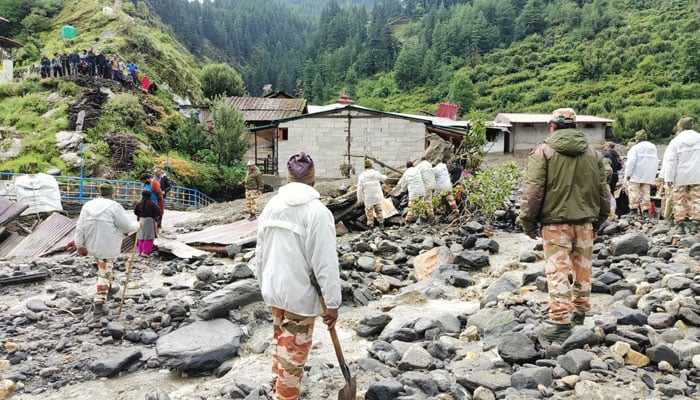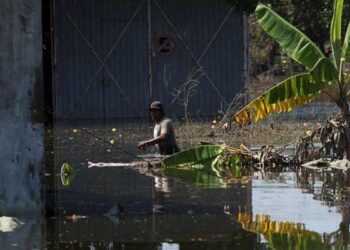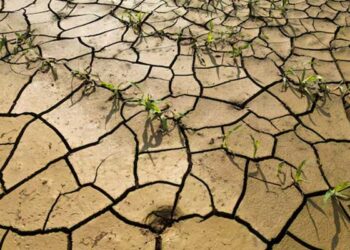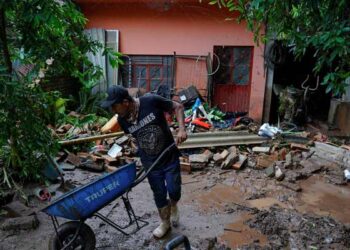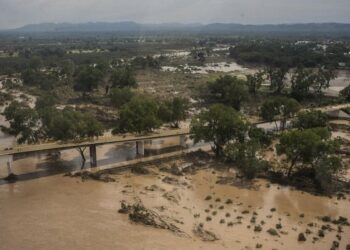Select Language:
A deadly flood swept through a Himalayan town in India, leaving at least 68 people missing nearly a week after a wall of icy water destroyed the area and buried it in mud. The official death toll has risen to over 70, including four confirmed fatalities from the disaster that occurred on August 5.
Survivors captured videos showing a frightening wave of muddy water rushing through the town, demolishing multi-story apartment buildings. Rescue teams are actively searching the ruins of Dharali in Uttarakhand for victims. According to Gambhir Singh Chauhan of the National Disaster Response Force, sniffer dogs have detected several locations with potential bodies, but when excavation began, water emerged from below. The teams are also using ground-penetrating radar to aid in the grim search.
Initially, over 100 individuals were reported missing, but the challenge of damaged roads and disrupted cellphone signals has complicated efforts to verify the list. The latest government update reports 68 missing persons, among them 44 Indians and 22 Nepalis, with nine soldiers also on the list.
Flooding and landslides are typical during the monsoon season from June to September, but climate change and reckless development practices are believed to be increasing the frequency and intensity of these events. Climate experts warn that this tragedy serves as a stark reminder of the escalating impacts of global warming.
While there’s no official explanation for the flood, scientists suggest that intense rainfall likely caused debris from a rapidly melting glacier to destabilize and collapse. Himalayan glaciers—crucial water sources for nearly two billion people—are melting faster than ever due to rising global temperatures, which exposes vulnerable communities to unpredictable and costly natural disasters. Additionally, the thawing of permafrost increases the likelihood of landslides.

